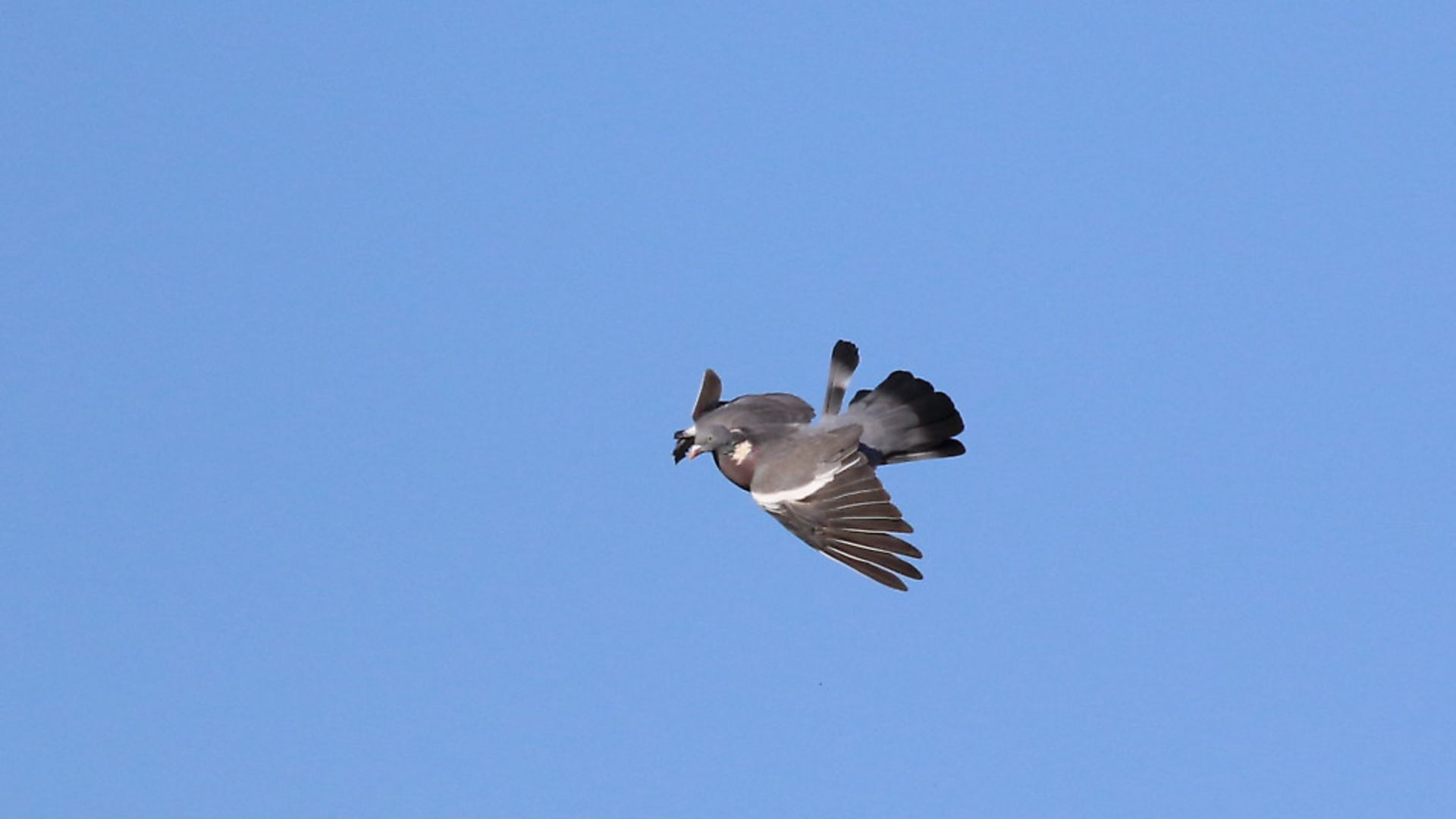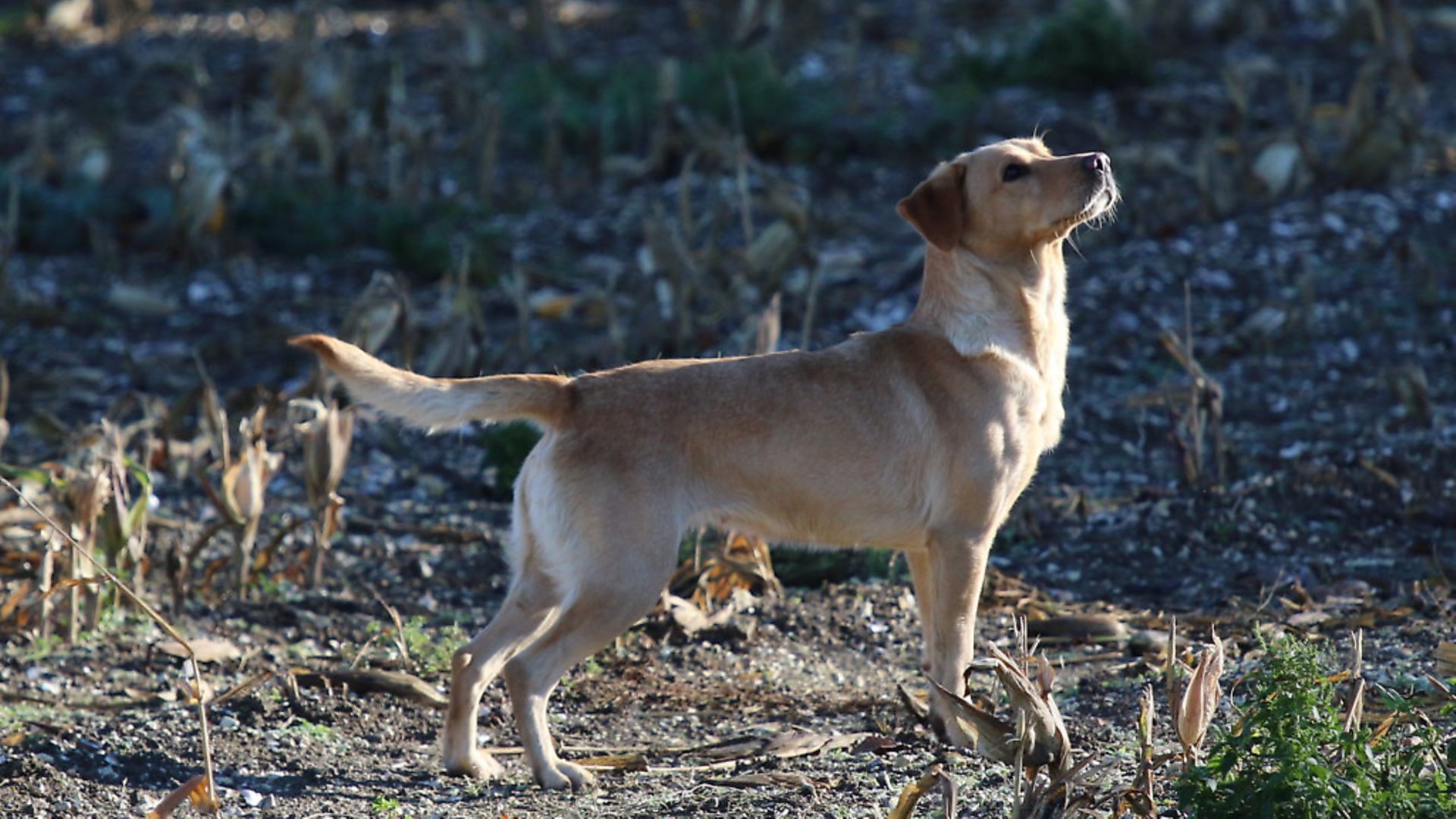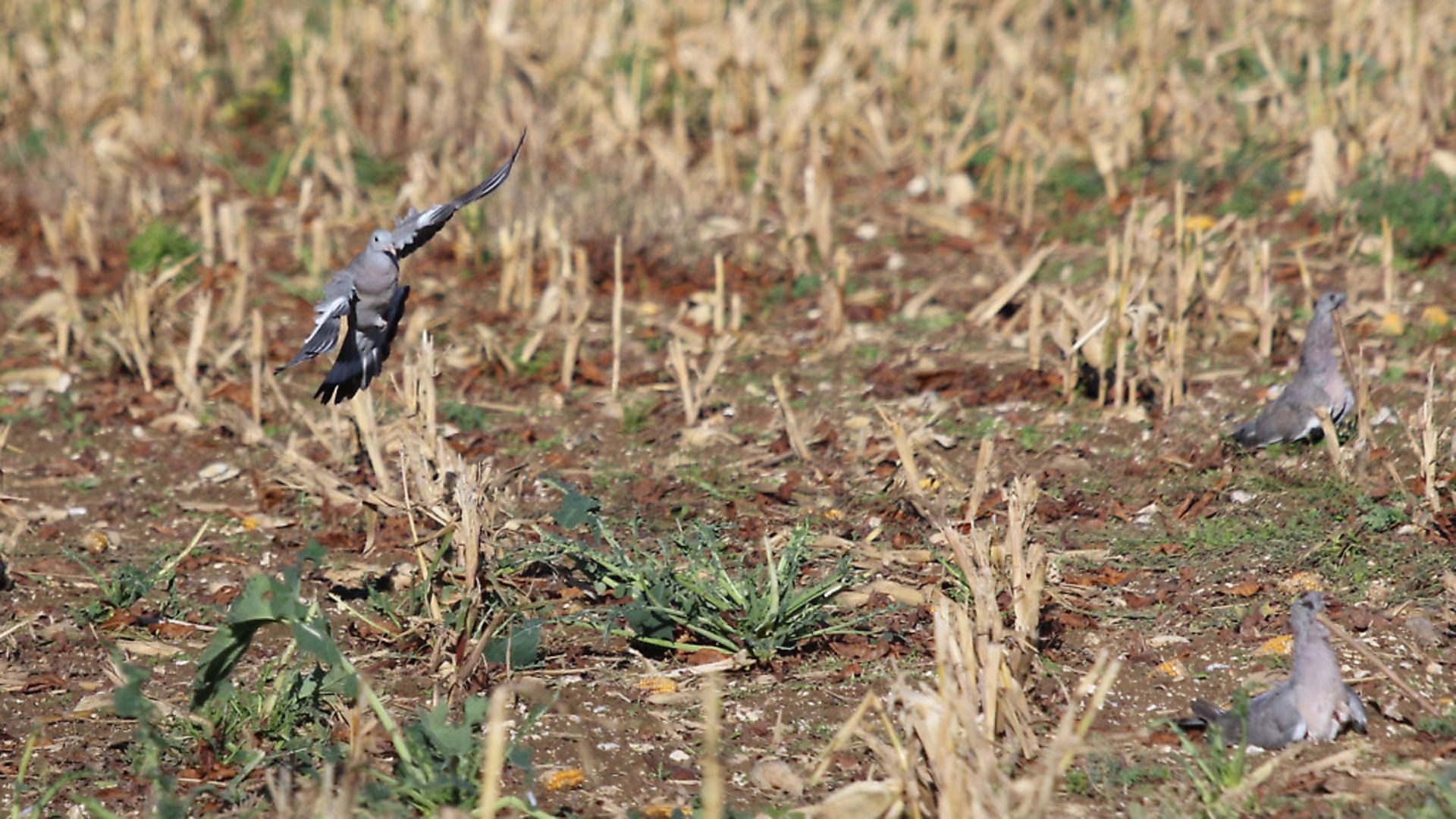We join Andy Crow and cousin Garry protecting a maize crop in Kent, where huge amounts of unharvested cobs are drawing in the grey hordes from miles around
 credit: Archant
credit: Archant
It’s a fine, bright autumn morning without a breath of wind, which is not the kind of weather to put a smile on Andy Crow’s face. “You should have been here yesterday,” he advises… helpfully.
We have rendezvoused within a cough and a spit of the famous Brands Hatch racetrack in Kent and while there is no activity on the circuit, the local pigeon population is definitely racing around.
“With a few cold, calm mornings of late, we have seen lots of pigeons migrating through the area and inevitably a decent food supply is going to attract their attention. And, as you’ll see, this place has a very serious food supply!”
We walk up a steep hill to a maize stubble that is absolutely littered with cobs. “Obviously this field has already been harvested, but where the weather was dry during the growing period, and the ground was very rough, the plants didn’t develop as well as normal so, come harvest, a lot of cobs were just knocked off by the forage harvester.
“The field next door is yet to be harvested and the pigeons are cycling between the two fields. We have set up on the stubbles so we can shoot the birds coming in to the standing crop without losing the shot birds or having difficulty retrieving them.”
The first job is to select a location for the hide. Andy has been reconnoitring the area in the last few days and has assessed the most used flightlines. A stand of trees along a hedge that splits the stubble from the crops is popular with pigeons throughout the day, close to the main flightline. The lack of wind might mean that the flightline is not so well defined, but we will have to wait and see.
Andy constructs his hide using his new favourite handmade ‘ghillie net’ that blends beautifully with the surroundings – even if cousin Garry does put it up back to front!
A handful of shot birds from a previous trip get put out as decoys and a pair of rotaries provide movement on the left and right flanks.
What is very clear right from the off is that, perfect conditions or not, plenty of pigeons want to be here. In fact, they really want to be here… and they decoy brilliantly! There is no finer sight for a pigeon shooter than a bird clocking the decoys and setting a determined glide path from hundreds of yards away. Well, maybe apart from the result of a well-placed 32g shot charge adding another woodie to the bag.
A few times, the large numbers of birds in the air mean that Andy chooses not to shoot to try and avoid spooking the flock, preferring to wait for birds to approach in ones and twos where possible. “On a quiet day, you can easily put off a large number of birds with a single shot. Let them pass and they are likely to come back through the day in drips and drabs.”
Andy and Garry have had something of a bumper year on the pigeons in 2020, bagging literally thousands between them. As double acts go, they are about as slick and well drilled as it gets, calling incoming targets for one another and mopping up misses, should there be any. Inevitably, the pressure of a camera causes a few more of those than normal early doors, but the opportunity for plenty of good-natured banter between the cousins is the one thing that is never missed!
Garry’s experienced Labrador, Brandy, is joining the team today and pulls off some cracking long retrieves. Like all good pigeon dogs, she reads both her master’s body language and watches the birds with a practiced eye, marking them down perfectly, pretty much without fail. Andy’s dog Rosa is happy to play second fiddle to her senior partner today, watching and learning from the hide when Brandy takes charge.
Avian traffic is consistent rather than relentless, although there is a noticeable hot spot between 1.30pm and 3pm. There is rarely a period when there aren’t birds moving around, keeping everybody focused on the job.
 credit: Archant
credit: Archant
A lot of birds are sneaking in from behind, meaning that Garry and Andy have to be on their mettle, trying to observe 360° of Kentish sky as effectively as possible. It’s mentally draining and a few birds manage to get in to the sitty trees behind them unobserved while a few more flash through the gap next to the hide to provide some thrilling snap shots.
“Often, when we are flighting longer birds, I’d be using Half or even Three-quarters choke but today I am on Skeet and a Quarter – and even then some of the birds are almost too close. We have been rising for the shot and then delaying a second or two to give the pigeons a chance to clear off an extra five or 10 yards to allow a decent shot pattern to develop.”
Andy sticks with the whirly all day – something that isn’t always the case. “I’ve used the flapper a lot through harvest and since, but in the past few weeks, the rotary has been working well. You’ve seen so many come right in to it today. It’s about judging their reaction and using the best tools on the day.”
The amount of birds in the area slows noticeably after 3pm and the guys collect up the bag. Over 120 pigeons is a really decent return for the day. Andy checks the crops and all feature plenty of maize, while many also include acorns and ivy berries from other feeding forays during the day.
“The field of standing maize is due to be harvested in the next day or so, but if there are lots of cobs left on top after it has been drilled, then we will probably be here again to try and protect the fresh drillings as well,” Andy says. “I would imagine that the pigeons will be frequenting this area for a long time yet!”
 credit: Archant
credit: Archant
 credit: Archant
credit: Archant
 credit: Archant
credit: Archant
 credit: Archant
credit: Archant
 credit: Archant
credit: Archant